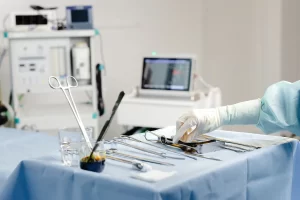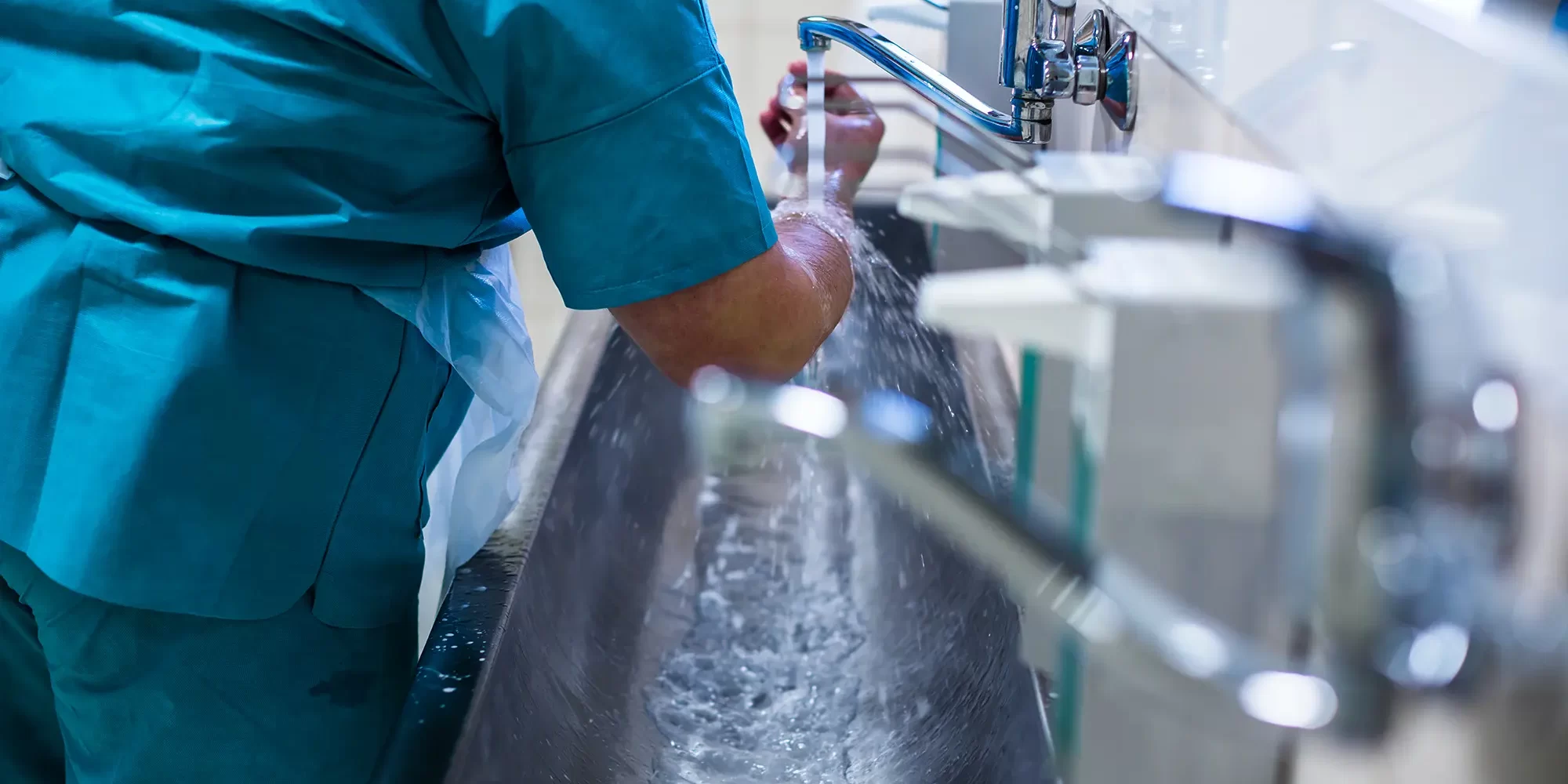Maintaining high hygiene standards in healthcare facilities is crucial for protecting both patients and staff from infections.
Hospitals, clinics, and care homes require rigorous disinfection protocols to prevent the spread of waterborne pathogens and other harmful microbes.
Chlorine Dioxide (ClO₂) has emerged as a superior disinfection solution in healthcare settings due to its powerful antimicrobial properties, safety profile, and effectiveness against biofilms.
Why Disinfection Matters in Healthcare Facilities
 Healthcare environments are at high risk of microbial contamination, particularly through waterborne pathogens that thrive in plumbing systems, cooling towers, and medical equipment. Bacteria such as Legionella, Pseudomonas aeruginosa, and Clostridium difficile can cause severe infections, especially in immunocompromised patients. Traditional disinfectants, such as chlorine, may struggle to fully eliminate these pathogens and their protective biofilms.
Healthcare environments are at high risk of microbial contamination, particularly through waterborne pathogens that thrive in plumbing systems, cooling towers, and medical equipment. Bacteria such as Legionella, Pseudomonas aeruginosa, and Clostridium difficile can cause severe infections, especially in immunocompromised patients. Traditional disinfectants, such as chlorine, may struggle to fully eliminate these pathogens and their protective biofilms.
Chlorine Dioxide provides a fast-acting and reliable solution for comprehensive disinfection, reducing infection risks and improving overall patient safety.
The Role of Chlorine Dioxide in Healthcare Disinfection
1. Eliminating Waterborne Pathogens
Waterborne infections are a significant concern in hospitals, particularly those linked to Legionella and Pseudomonas bacteria, which can cause severe respiratory illnesses. Chlorine Dioxide is highly effective at penetrating and destroying these pathogens, ensuring safe water for drinking, cleaning, and medical use. Unlike traditional chlorine, ClO₂ does not produce harmful by-products like trihalomethanes (THMs), making it a safer option for hospital water systems.
2. Biofilm Removal and Prevention
Biofilms – protective layers of bacteria that form on surfaces – are a persistent problem in healthcare water systems. They shield harmful microorganisms from standard disinfectants, making infections difficult to control. Chlorine Dioxide is one of the few disinfectants capable of fully penetrating biofilms, eliminating bacteria at the source and preventing regrowth.
3. Sterilisation of Medical Equipment and Surfaces
Medical tools, surgical instruments, and frequently touched surfaces require rigorous disinfection to prevent cross-contamination. Chlorine Dioxide is highly effective in sterilising these surfaces without leaving harmful residues, ensuring compliance with infection control protocols.
4. Safe for Use in Healthcare Environments
Many conventional disinfectants produce strong odours or leave behind toxic residues, which can be harmful to vulnerable patients and staff. Chlorine Dioxide breaks down into harmless by-products, making it a safer alternative for use in hospitals, care homes, and laboratories.
5. Compliance with Healthcare Regulations
Healthcare facilities must meet strict hygiene and disinfection standards. Chlorine Dioxide is widely recognised and compliant with international regulations for hospital disinfection. Its ability to provide broad-spectrum microbial control while minimising environmental impact makes it a preferred choice for healthcare administrators seeking sustainable and effective solutions.
The Future of Healthcare Disinfection
With rising concerns over antimicrobial resistance and hospital-acquired infections, adopting effective and environmentally friendly disinfection methods is more important than ever. Chlorine Dioxide provides a proven solution for healthcare facilities looking to enhance safety, prevent outbreaks, and maintain the highest hygiene standards.
Chlorine Dioxide is transforming healthcare disinfection by offering a powerful, safe, and eco-friendly alternative to traditional cleaning agents. Its ability to eliminate waterborne pathogens, remove biofilm, and disinfect medical equipment makes it an essential tool for maintaining a sterile environment in hospitals and healthcare facilities.
For more information on how Chlorine Dioxide can enhance disinfection in your healthcare facility, contact Scotmas today.






